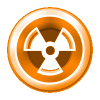Gametext: Difference between revisions
No edit summary |
No edit summary |
||
| Line 11: | Line 11: | ||
<shade> and <pal> are obviously shade and palette. | <shade> and <pal> are obviously shade and palette. | ||
<[[orientation]]> controls the way the sprite is drawn (see entry). | <[[orientation]]> controls the way the sprite is drawn (see entry). Note: it's recommended to you always set the bit 16 in order to the letters be placed correctly. | ||
<x1>, <y1>, <x2> and <y2> are boundaries on the screen that define where the text may be drawn. | <x1>, <y1>, <x2> and <y2> are boundaries on the screen that define where the text may be drawn. | ||
Revision as of 19:45, 23 August 2008
gametext <tilenum> <x> <y> <quote> <shade> <pal> <orientation> <x1> <y1> <x2> <y2>
Prints a defined quote to the screen.
<tilenum> is the first tile of a sequence of characters. See tile 2822 for an example.
<x> and <y> are on-screen coordinates.
<quote> is the quote to print, as defined by definequote.
<shade> and <pal> are obviously shade and palette.
<orientation> controls the way the sprite is drawn (see entry). Note: it's recommended to you always set the bit 16 in order to the letters be placed correctly.
<x1>, <y1>, <x2> and <y2> are boundaries on the screen that define where the text may be drawn.
Example code:
setvar x 320 // "x=320" makes text be centered setvar y 100 setvar shade 0 setvar pal 0 setvar tilenum STARTALPHANUM setvar orientation 26 setvar TEMP 100 redefinequote TEMP This is ^10red // makes the "red" word be tinted, 10 is red. gametext tilenum x y TEMP shade pal orientation ZERO ZERO xdim ydim
Please note that as with digitalnumber, digitalnumberz, gametextz, minitext and friends, gametext only works during events.
